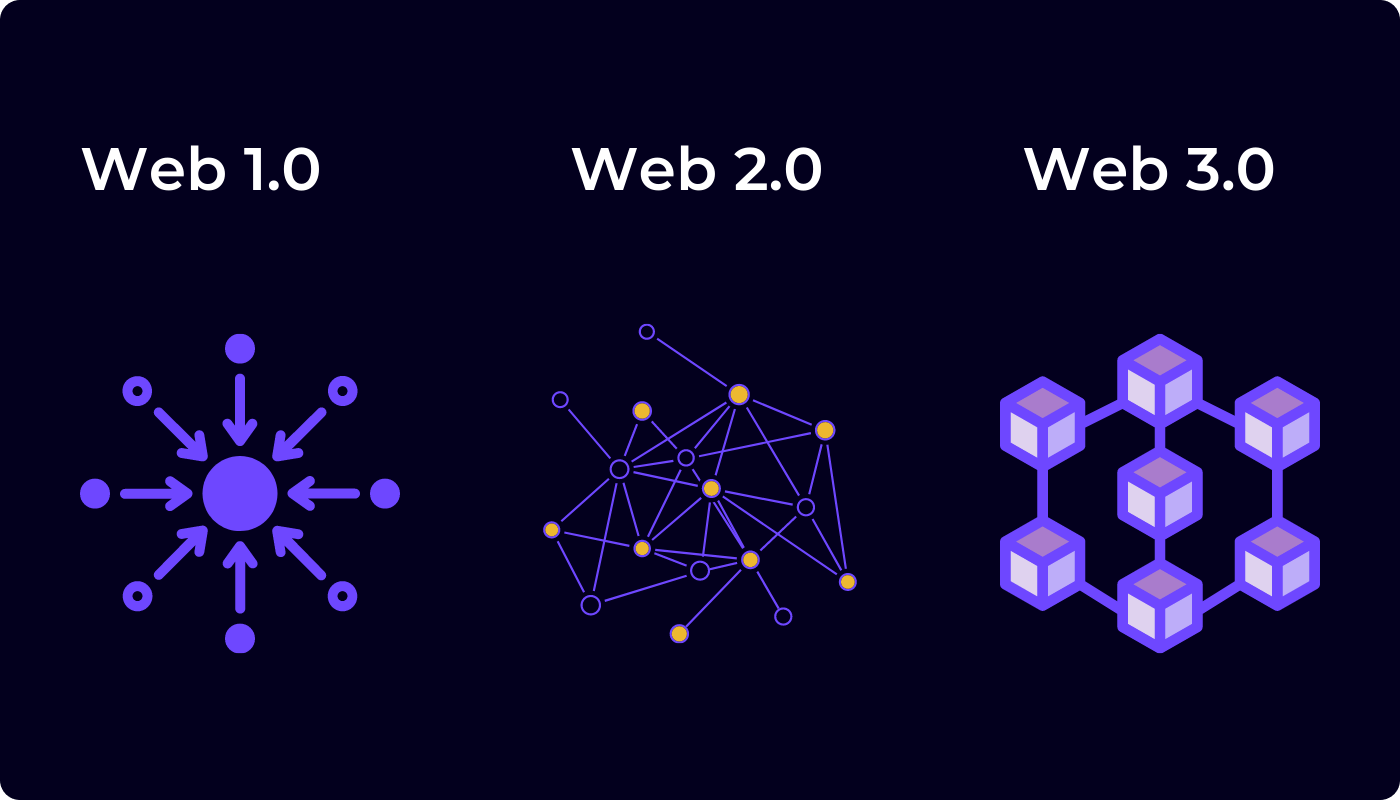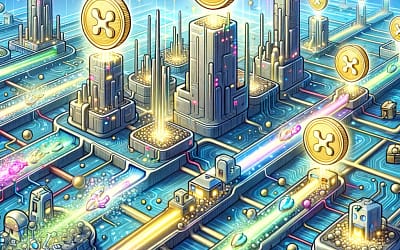What Is Web 3.0
Web 3.0 is the next evolution of the internet as we know it, also known as the decentralized web. It's a new way of creating and accessing online services, applications, and content that's not controlled by any single entity or organization. Unlike the web 2.0 that we currently use, which is centralized and controlled by a small number of large companies, web 3.0 is built on a decentralized network of computers that work together to provide services.
When you think of web 2.0, think of companies like Facebook/Meta, YouTube, Shopify, Spotify, Vimeo, and others. You create content and upload it to these platforms, but you don't own the content. If YouTube doesn't like your videos and decides to demonetize your channel, there's little you can do. You're not truly the owner of your content.
Web 3 changes all of this, and hands the control back over to you.
Web 3.0 is a new way of creating and accessing online services and content that is more secure, transparent, and user-centric, and less reliant on centralized institutions, which is expected to bring more opportunities for innovation, decentralization, and user empowerment to the internet.
One of the key technologies powering web 3.0 is blockchain, which allows for secure and transparent transactions without the need for a central authority.
This allows for the creation of decentralized applications, or dApps, that run on a blockchain network.
These dApps can be used for a variety of purposes, such as online marketplaces, social networks, and financial services.
Another key aspect of web 3.0 is the use of smart contracts, which are self-executing computer programs with the terms of the agreement between buyer and seller being directly written into lines of code.
This allows for the automation of complex processes, such as financial transactions, without the need for intermediaries because it's a trustless system.
Web 3.0 also emphasizes on the use of decentralized storage solutions, such as InterPlanetary File System (IPFS) and Filecoin, which allows for the storage and retrieval of data in a decentralized manner, rather than relying on centralized servers. This allows for greater security and privacy of data, as well as the ability to access and share data even if a centralized server is down or offline.
Web 3.0 is also designed to be more user-centric, giving users greater control over their data, privacy, and security. It empowers the users to own and control their digital identity, and the data they share and create online.
Onyx By JP Morgan
Look no further than JP Morgan's Onyx platform. This banking giant has secretly behind the scenes built out their own banking blockchain.
Onyx is a J.P. Morgan business unit that leverages cutting-edge technologies like Blockchain to develop innovative products, platforms and marketplaces.
According to JP Morgan, Onyx is the world's first bank-led blockchain platform.
I'm not sure if I need to say anything more.
A major banking institution has already seen the future, and has built out its own blockchain!
Meta
Facebook has gone so far as to change its company name from Facebook to Meta, as it tries to front-run web 3.0 and the metaverse.
More Companies Investing in Web 3.0
Checkout this infographic from 101 Blockchains which gives you a brief idea of what some of the most recognizable companies are doing to get ready for web 3.0

Web 3.0 is going to change the way you use and interact with the internet. New businesses will come out of this, and new sectors of the economy will emerge and astonish you.
Just The Beginning
Web 3.0 is still in its early stages of development, with many of its features and capabilities yet to be fully realized.
The necessary technology is still being developed and refined by some of the smartest people you've ever heard about in the world.
Blockchain technology, which is a key component of Web 3.0, is still relatively new and requires further development in areas such as scalability and interoperability.
Decentralized storage solutions and other key technologies such as sharding and off-chain computations are still being researched and developed as we speak.
There is still limited adoption and usage of Web 3.0 applications and services because we're still early.
While there are a growing number of decentralized applications (dApps) and platforms available, they are still not as widely used or adopted as their centralized counterparts. This is partly due to the fact that these technologies are still new and unfamiliar to many users, as well as the fact that there is still a lack of infrastructure and support for these technologies.
As the ecosystem is still evolving, with the industry still figuring out the best ways to monetize and create sustainable business models, this is still a work in progress.
The industry is still figuring out how to make decentralized applications and services usable for the mass market. We still have a ways to go before blockchain is user-friendly before we can have mass adoption.
Nevertheless, there is a strong belief that this technology will bring significant changes and benefits to the way we interact and use the internet. It's only a matter of time until we all start using blockchain technology in our everyday lives, and probably at that time, you won't even know you're using it.
Matt is the founder of TechMalak. When he's not buried face-deep in the crypto charts you can find him tinkering with the latest tech gadgets and A. I tools. He's a crypto investor and entrepreneur. He uses a mixture of A.I and human thought and input into all his articles on TechMalak, further merging man with machine.





